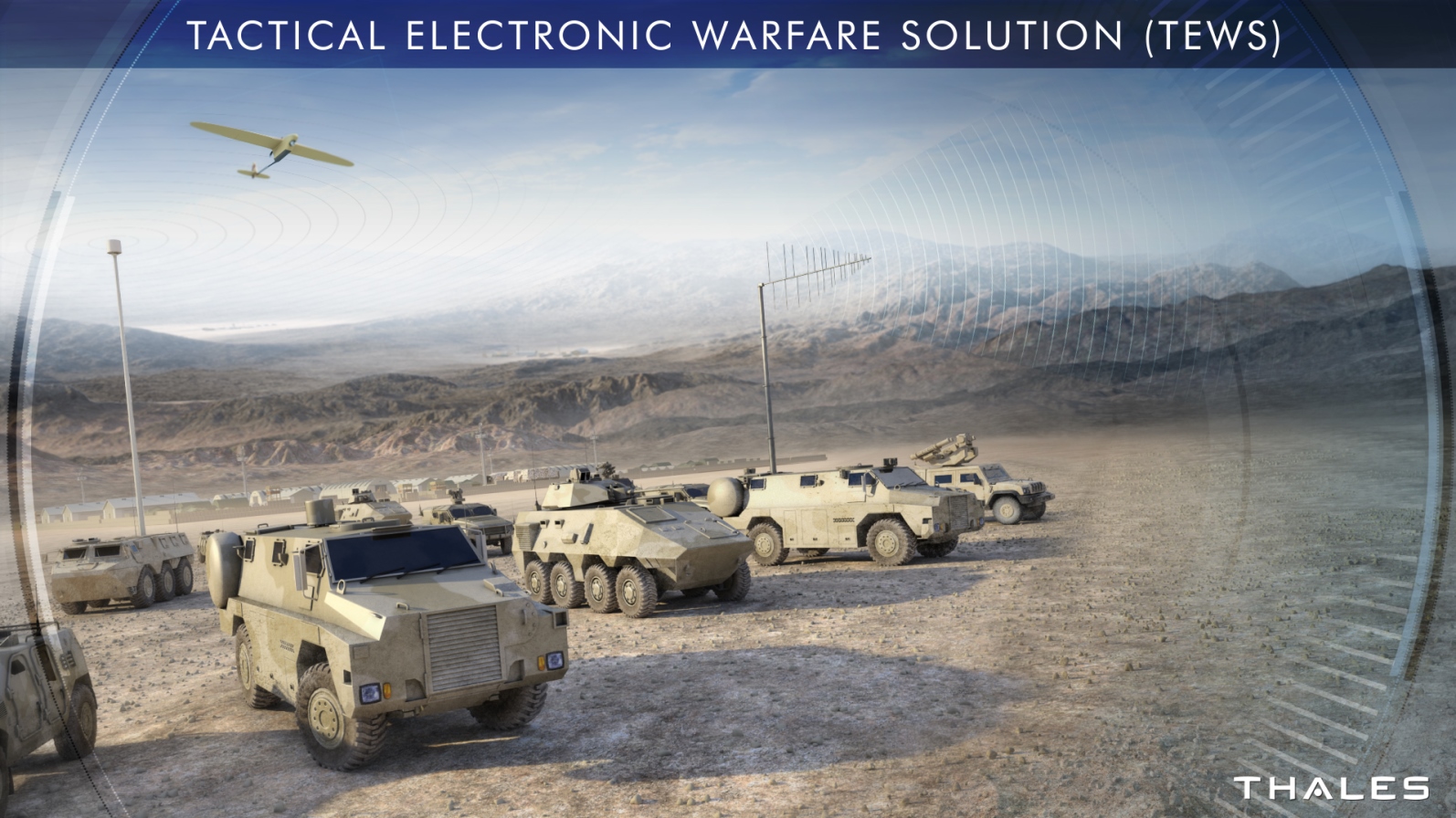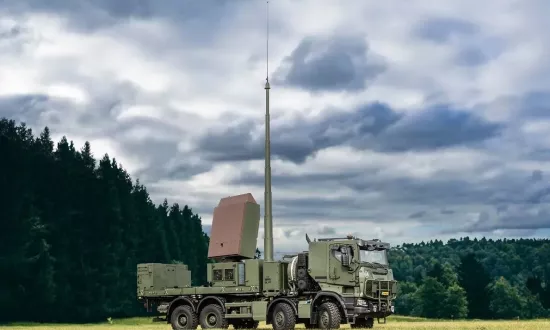Communications electronic warfare: a comprehensive solution for dominating the electromagnetic spectrum and modelling enemy capability

North-west of Altaga, in the middle of the Sahara desert, terrorist attacks have been increasing in frequency in recent weeks. The terrorists appear from nowhere in pickup trucks fitted with large-calibre weapons, wreak havoc and disappear as quickly as they arrived.
Advancing in the searing heat, a convoy of regular army vehicles participating in Operation Bald Eagle disturbs the deceptive calm of the desert. The convoy is moving swiftly and purposefully, indicating that this is no routine patrol.
The search is on for armed terrorists in pickup trucks, who have been spotted in an area of a few dozen square miles. At the head of the column, Lieutenant Céline, 29, is coordinating the actions of the various vehicles in the convoy.
With eight armoured fighting vehicles under her command, Céline has what it takes to respond to a major attack. But first, her group needs to track down the terrorist groups and stop them communicating. Three other vehicles in the convoy are equipped with Thales communications electronic warfare systems: one for direction-finding and listening to messages sent and received by terrorists, the other two for jamming the signals.
Seek and disrupt
The goal of communications electronic warfare is to intercept electromagnetic emissions from hostile sources in order to identify the forces in the field, determine their exact position, and disrupt their operations by jamming their signals. To meet this strategic need, Thales has developed a suite of systems known as the Tactical Electronic Warfare System (TEWS).
TEWS is a comprehensive solution based on:
- Sensors including interceptors/direction finders to detect, identify and locate hostile forces, and jammers to disrupt their communications
- A software suite based on KEYOBS, with an automated graphical interface to help users exploit the data
- Communication systems to transfer data between vehicles. Thales's unique expertise in all these areas gives armed forces the flexibility they need at the same time as automating key parts of the information sharing process.
Specialist vehicles
With the TEWS, Thales can provide different types of electronic warfare vehicles equipped for specific missions.
- Vehicles equipped with direction finders positioned on higher ground use a deployable antenna to capture signals in the surrounding area. The direction of a signal can be determined whether the source is stationary or on the move.
- Jamming vehicles launch electromagnetic attacks as appropriate to isolate hostile forces by denying them access to communications.
- The C2 (Command & Control) vehicle controls the mission and adapts manoeuvres as the situation unfolds.
To ensure each operation is as efficient as possible, mission preparation is vital. TEWS software based on the KEYOBS suite TEWS can determine in advance where direction-finding and jamming vehicles will need to be positioned to optimise signal capture and jamming. This simulation function reproduces the local topography and calculates the effect of terrain features on the operational scenario.
The element of surprise
In Lieutenant Céline’s convoy, the direction-finding and eavesdropping vehicle has picked up signals that appear to indicate two groups of terrorists in vehicles straight ahead.
To confirm the number of adversaries involved, and how heavily they are armed, the commander needs visual confirmation: she requests air support, and provides rear commanders with the location of the detected groups.
Shortly afterwards, an UAV taking part in Operation Bald Eagle flies discreetly over the desert, capturing the enemy force on video as it heads north. There are two groups of three pickup trucks, all armed with machine guns, located a few hundred metres apart. The enemy position has been located with a high degree of precision: the terrorists are within striking distance.
Lieutenant Céline decides to deploy jamming systems. The two dedicated vehicles are in position within minutes. The jamming operation is configured using the information already detected, and, all of a sudden, communications in the area are compromised.
At the same time, the young officer launches an assault by the unit’s armoured vehicles. Time is of the essence. Minutes later, the vehicles have the enemy in the sights of their 20-millimetre guns. Unable to match the unit’s firepower and armour, the terrorists quickly lay down their weapons.
The element of surprise was key: the terrorists had attempted to contact their commanders to receive orders and call for reinforcements, but all in vain. The soldiers on Operation Bald Eagle apprehend the fighters and take an inventory of their weapons.
All the information gathered on the mission, and the details of the signals intercepted during the operation, will now be analysed and exploited in the databases maintained by the armed forces intelligence services.
Thales Electronic Warfare Systems complement other assets — electronic warfare systems, manned aircraft and increasingly UAVs — to support armed units in their decisive moments, prepare their missions, increase their chances of success and reduce the risks for soldiers.


